This article was medically reviewed by Cristian Macau, DDS. Dr. Macau is an oral surgeon, periodontist, and aesthetician at Favero Dental Clinic in London. He received his DDS from Carol Davila University of Medicine in 2015.
There are 12 references cited in this article, which can be found at the bottom of the page.
wikiHow marks an article as reader-approved once it receives enough positive feedback. In this case, 87% of readers who voted found the article helpful, earning it our reader-approved status.
This article has been viewed 241,581 times.
Whitening or bleaching your teeth can create a more appealing and youthful smile. When done correctly, whitening is a safe and effective process that does not harm your teeth and it may even increase your self-confidence. If you want to brighten your smile, there are several options you can try.
Steps
Exploring Whitening Options
-
1Bleach your teeth with baking soda. If this stuff can be found in toothpaste, it's got to work. Turns out there are free radicals in baking soda that can penetrate through your enamel, turning stains clear. Just dip your toothbrush in the stuff and scrub away for a couple of minutes, just like you're brushing your teeth.[1]
- There has been some uproar about just how safe this is, for the record. While it is effective, some say that it damages the enamel of your teeth, weakening it or destroying it entirely, especially if you use the back and forth brushing method using a toothbrush with hard bristles. To be safe, you may not want to rely on this option in the long-term. Using this option two times a week is more than enough.[2]
-
2Bleach your teeth with strawberries. This delicious fruit contains malic acid, an agent that can tear through stains. Crush up a berry in your baking soda paste, spread it on your teeth, and leave for five minutes. Brush it off and you're good to go! You can sometimes see a brighter tooth surface right away.
- Citric acid in strawberries can wear away your enamel.[3]
- If you're in a hard spot, just rub the fruit on your teeth (cut up to get at the juices, of course) and wash off with a glass of water.
Advertisement -
3Experiment with coconut oil or apple cider vinegar. Though it's up for debate, some swear that these two are natural teeth-whiteners, too. Just use them as a mouthwash or rub them onto your teeth and let sit for 10 minutes or so. Brush your teeth afterward, rinse out, and voila![4]
- Vinegar contains acid which can wear away your enamel.
- However, these methods shouldn't solely be relied on. It may take a month or two before you notice any results.
-
4Buy a teeth-whitening kit. As if it could get any easier, right? Your local big box store or pharmacy probably carries a few options when it comes to teeth-whitening kits. Some are rather expensive and some aren't -- but all will warrant results (it's just a matter of time). If you can spring for it, do so.[5]
- Check for “hydrogen peroxide” in the ingredients. This is helpful for whitening your teeth. A 6% concentration is more than enough.[6]
-
5Get a kit from your dentist. He has access to super powerful gels and trays that you won't find at your local pharmacy. And if he doesn't, for some reason, have any available, he probably knows someone who does. It doesn't hurt to ask![7]
- Trays and gels are super powerful, but the main drawback is that it may not fit your mouth. If your jaw is a little, say, unique, you may find these difficult to work with.
- Your dentist can provide custom trays for you that will fit snugly over your teeth and provide a better result.
-
6Get your teeth professionally bleached. Several excellent technologies have emerged for bleaching and whitening the teeth. Although some of these procedures must be performed in the dentist's office, a few can be done at home. Ask your dentist what he or she recommends. The latest procedure is laser whitening.[8]
- This is perhaps the quickest method, and definitely the most expensive.
- In case of intrinsic stains, veneers or lumineers can also be used (both of these are cosmetic procedures).
Taking Daily Precautions
-
1Stick to your brushing and flossing regimen. The best way to prevent dental problems and staining is still brushing and flossing, hands down.[9] Be sure to brush before bed and when you get up, but after meals is essential, too.[10] Food left on your teeth can lead to stains -- when it immediately is brushed off, stains can't form.
- Aim for brushing a full 2 minutes each time. And brush your tongue and gums, too!
-
2Don't forget about whitening gum and mouthwash. Though brushing and flossing are more imperative than using mouthwash and gum, the more precaution you take against stains, the whiter your teeth will be (and stay). In between hygiene sessions, just pop in a piece of whitening gum or take a quick swish of whitening mouthwash.[11] It's good for your health, too!
- Gum and mouthwashes help to keep your teeth white and prevent staining while also fighting against bacteria and cavities.
- These won't have a great effect on their own, but can make a bit of difference when combined with a good brushing and flossing regimen. Think of them as the icing on the cake.
-
3Avoid all forms of tobacco. That includes cigarettes, pipes, cigars, chewing tobacco, and snuff. All of them are bad for you and your teeth. It's tempting to think that chewing tobacco is better for you (and your teeth) than smoking, but it's not. Chewing tobacco and snuff have at least 28 chemicals that lead to oral cancer and are much more addictive than nicotine because they are directly absorbed through the oral mucosa. You're only good bet is to stay away from them all.[12]
-
4Cut down on your intake of coffee and tea. If you can't start your morning without a cup, try drinking it through a straw, so it doesn't stain your teeth. It's better to cut these out entirely, so if you can muster it, do so.[13]
- And no, cream or milk won't make your coffee stain less. The enamel-destroying powers are still there. So unless that cream takes up most of your cup (eliminating room for coffee), that lighter color won't do you much good.
- Cut back on soft drinks as well because they can also erode your enamel.
-
5Disguise your cavities. Nowadays tooth-colored fillings are all the rage. However, you may have a dark, highly visible amalgam filling if a natural color wasn't available. If you have a little money lying around, consider having it replaced with a tooth-colored plastic composite, which makes the tooth look intact even when you look closely at it.[14]
- A rotten tooth can also be covered up by a porcelain crown. Talk to your doctor about your options.
-
6Go to the dentist more often than you need. Just going in for a teeth cleaning will be sure to keep your smile white and sparkly. And, what's more, your dentist will catch any problems sooner rather than later, so it's a win-win.[15]
-
7Wear blue tints. Turns out blue tints (on your body or on your lips) make ivories look whiter. So opt for that navy turtleneck or that berry lip gloss instead of the bright red sweater and matching lipstick. Sure, the effect goes away when you take it off, but it's a quick fix!
- Don't go for matte lipsticks or glosses, though, even if they are blue-tinted. They'll make your teeth look dingy or less pearly. Stick to glosses for sheen and shine.
Expert Q&A
-
QuestionCan you bleach your teeth with baking soda?
 Cristian Macau, DDSDr. Macau is an oral surgeon, periodontist, and aesthetician at Favero Dental Clinic in London. He received his DDS from Carol Davila University of Medicine in 2015.
Cristian Macau, DDSDr. Macau is an oral surgeon, periodontist, and aesthetician at Favero Dental Clinic in London. He received his DDS from Carol Davila University of Medicine in 2015.
Doctor of Dental Surgery If the natural color of your teeth is white, baking soda is not going to make much of a difference other than offering you a brighter smile. If your teeth are more of a yellow shade then you can see good improvements after using the baking soda for a couple of months.
If the natural color of your teeth is white, baking soda is not going to make much of a difference other than offering you a brighter smile. If your teeth are more of a yellow shade then you can see good improvements after using the baking soda for a couple of months. -
QuestionWhat are enamel white patches on your teeth?
 Cristian Macau, DDSDr. Macau is an oral surgeon, periodontist, and aesthetician at Favero Dental Clinic in London. He received his DDS from Carol Davila University of Medicine in 2015.
Cristian Macau, DDSDr. Macau is an oral surgeon, periodontist, and aesthetician at Favero Dental Clinic in London. He received his DDS from Carol Davila University of Medicine in 2015.
Doctor of Dental Surgery They represent a less mineralized area of the enamel that was formed during the developing process when you were a kid. It can also be the case of fluorosis if your parents gave you fluoride tablets or the water you were drinking had too much fluoride. It is best to leave them as they are and consider your teeth as special.
They represent a less mineralized area of the enamel that was formed during the developing process when you were a kid. It can also be the case of fluorosis if your parents gave you fluoride tablets or the water you were drinking had too much fluoride. It is best to leave them as they are and consider your teeth as special.
References
- ↑ https://edition.cnn.com/2019/10/03/health/salt-baking-soda-teeth-whitening-wellness/index.html
- ↑ https://edition.cnn.com/2019/10/03/health/salt-baking-soda-teeth-whitening-wellness/index.html
- ↑ https://www.webmd.com/oral-health/ss/slideshow-natural-teeth-whitening
- ↑ https://www.mouthhealthy.org/en/az-topics/w/natural-teeth-whitening
- ↑ https://www.mouthhealthy.org/en/az-topics/w/whitening
- ↑ https://www.ada.org/en/member-center/oral-health-topics/whitening
- ↑ https://www.mouthhealthy.org/en/az-topics/w/whitening
- ↑ https://www.nhs.uk/live-well/healthy-body/teeth-whitening/
- ↑ https://www.mouthhealthy.org/en/az-topics/f/flossing-steps
- ↑ https://www.mouthhealthy.org/en/az-topics/b/brushing-your-teeth
- ↑ https://www.ada.org/en/member-center/oral-health-topics/mouthrinse
- ↑ https://my.clevelandclinic.org/health/diseases/10958-tooth-discoloration
- ↑ https://my.clevelandclinic.org/health/diseases/10958-tooth-discoloration
- ↑ https://www.mouthhealthy.org/en/az-topics/d/dental-filling-options
- ↑ https://familydoctor.org/mouth-and-teeth-how-to-keep-them-healthy/
About This Article
If you want to bleach your teeth at home, start by dipping your tooth brush into baking soda, and brush your teeth as you normally would 2 times per week with the baking soda. For a more permanent option, buy a teeth whitening kit from your local pharmacy or supermarket, and follow the directions on the package for best results. If you have long-term issues with discoloration, talk to your dentist about purchasing an at-home kit, or ask for a referral for professional bleaching. Read on for tips from our Dental reviewer about how to keep your teeth white and shiny!
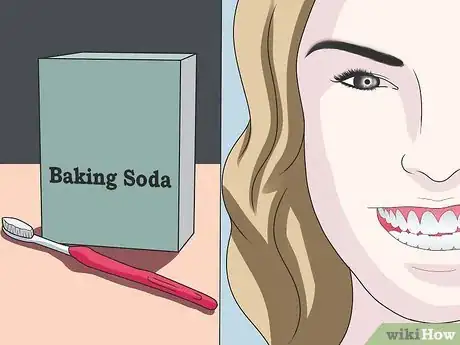
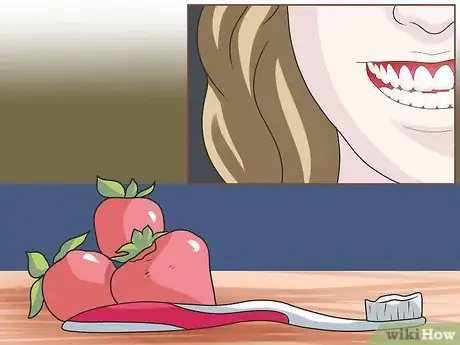
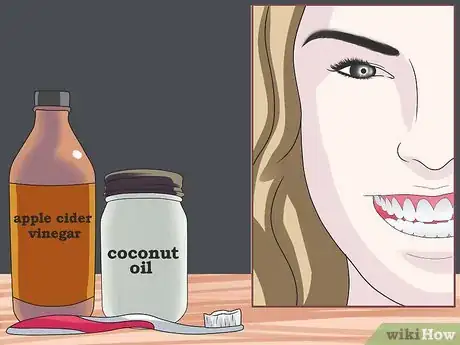
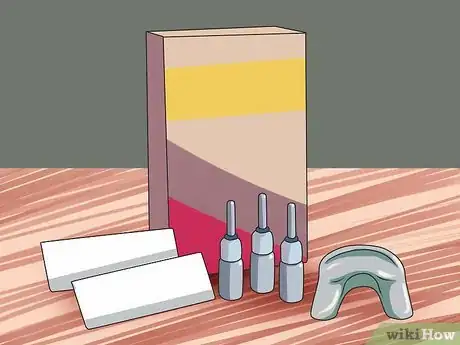
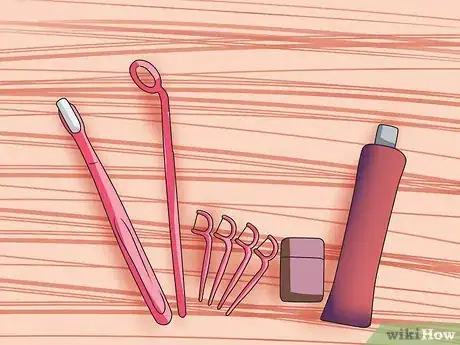
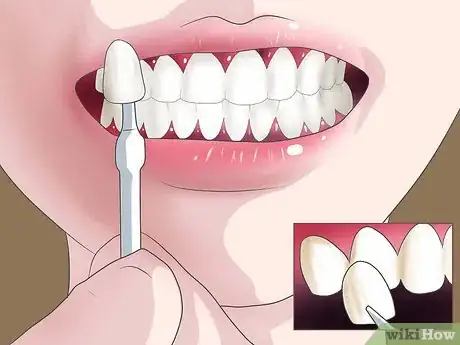

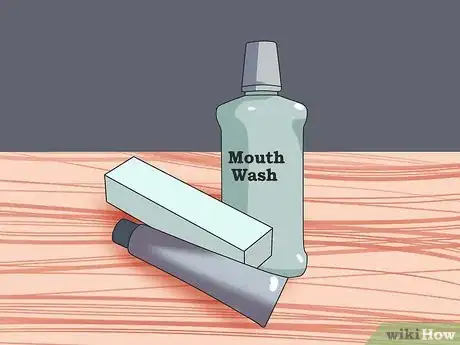
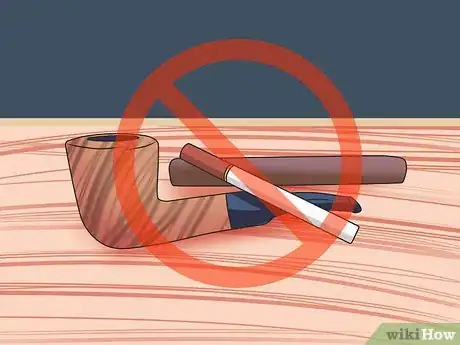

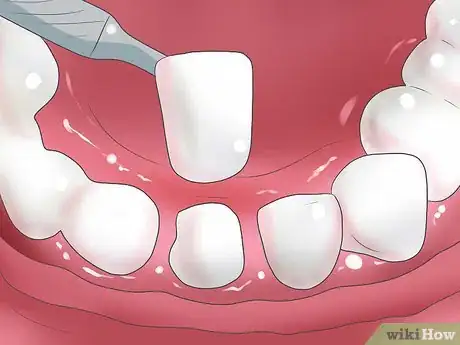


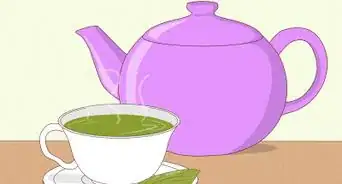
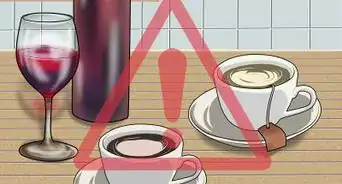
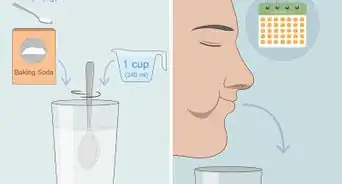
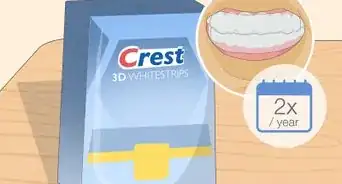
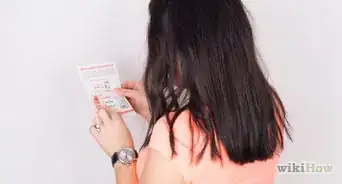
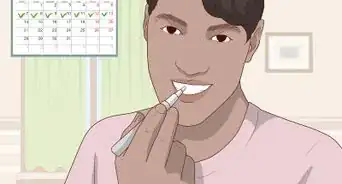



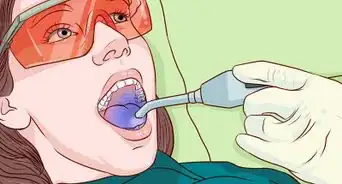

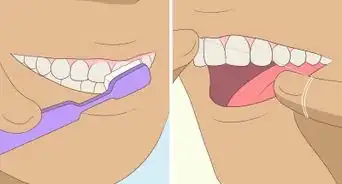

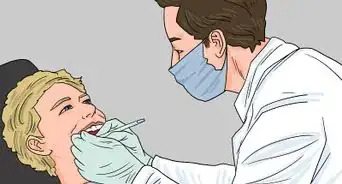










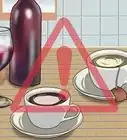
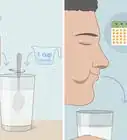
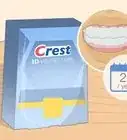



































Medical Disclaimer
The content of this article is not intended to be a substitute for professional medical advice, examination, diagnosis, or treatment. You should always contact your doctor or other qualified healthcare professional before starting, changing, or stopping any kind of health treatment.
Read More...